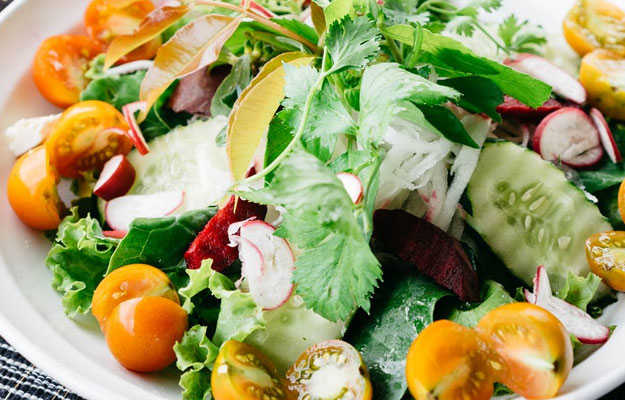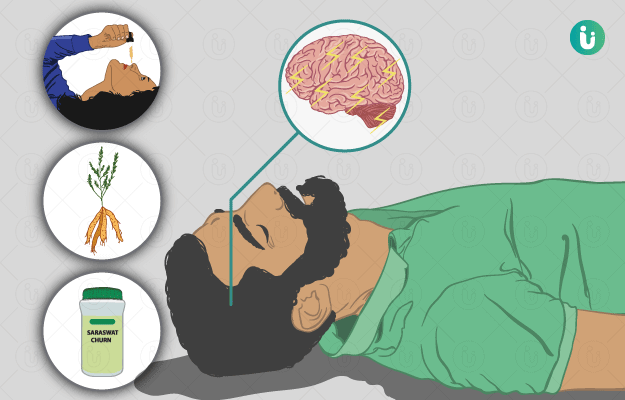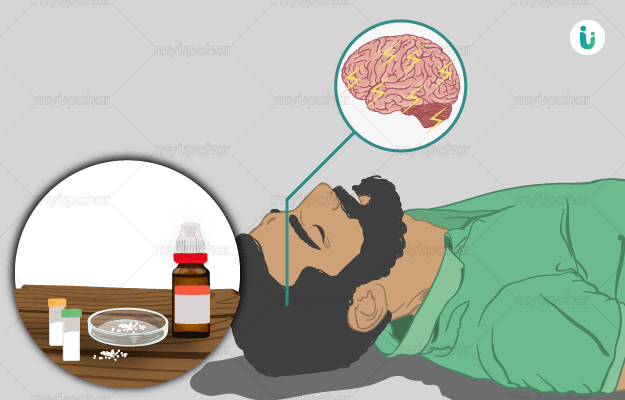Epilepsy is defined as having two or more unprovoked seizures as a result of excessive electrical discharges in a group of brain cells. Seizures can vary from the briefest lapses of attention or muscle jerks to prolonged convulsions and loss of consciousness and control of bowel or bladder function, which is frequently followed by extreme tiredness, stiffness, etc. These seizures have a range of severity depending on the individual. To control the seizures, the use of the ketogenic diet can be traced back to the texts of Hippocrates in the 5th century BC.
There are several research studies that show that the ketogenic diet is a special high-fat, low carbohydrate diet that helps control seizures in some people with epilepsy. In this article, you’ll read about the food you should have during the ketogenic diet and a weekly diet plan for you to try.
- Foods you can eat when following the keto diet for epilepsy
- Foods you can’t eat when following the keto diet for epilepsy
- Weekly diet plan for epilepsy patients
- Epilepsy Diet: Things to remember
Foods you can eat when following the keto diet for epilepsy
Almost everything that is rich in fat and protein, and low in carb can be a part of the keto diet. You can consider eating the following food items:
- Almond flour
- Coconut flour
- High-fat dressings for salads
- Coconut oil
- Olive oil
- High-fat cream
- Ghee
- Butter
- Unsweetened peanut butter
- Cheese
- Paneer
- Fish
- Lamb
- Eggs
- Chicken
- Mutton
- Tofu
- Soy or almond milk
- Tea and coffee (without sugar)
- Cauliflower
- Spinach
- Fenugreek
- Cabbage
- Onion
- Cucumber
- Zucchini
- Bell peppers
- Avocado
- Almonds
- Walnuts
- Cashews
- Sunflower seeds
- Chia seeds
- Pumpkin seeds
- Flax seeds
Foods you can’t eat when following the keto diet for epilepsy
One should avoid foods that contain a high amount of carbohydrates. The following items should be not be included in your daily plan:
- Sugar
- Sugar syrup
- Fruits (high to medium GI fruits)
- Milk
- Alcohol
- Carbonated drinks
- Wine
- Fruit juice
- Pineapple
- Banana
- Mango
- Papaya
- Oranges
- Grapes
- Dates
- Raisin
- Honey
- Sweets
- Bread
- Pizza
- Pasta
- Cereals (rice, wheat, corn, barley, quinoa, oats)
- Legumes and pulses (kidney beans, black-eyed beans, lentils)
- Processed foods
- Carrots
- Beetroot
- Potato
- Yam
- Sweet potatoes
- Jaggery
- Chocolates
- Candies
- Donuts
- Pastries
- Cakes
Weekly diet plan for epilepsy patients
The following weekly keto plan with Indian ingredient is designed to help you get started:
Day 1
- Early morning: Black tea with ghee (1 cup) + almonds (8) + walnuts (3-4)
- Breakfast: Omelette (2 eggs + vegetable) / Peanut butter protein shake (1 glass) + orange (1 small)
- Lunch: Almond flour chapati (2) + paneer mutton curry (3-4 pieces) + methi saag (1 bowl)
- Evening: Green tea (1 cup) + peanuts (1-2 handful)
- Dinner: Almond flour chapati (2) + bottle gourd kofta (4-5 pieces)
Day 2
- Early morning: Black coffee + almonds (8) + walnuts (3-4)
- Breakfast: Boiled eggs (2) + stir fry veg (1 bowl) / paneer bhurji with vegetables + avocado smoothie (1 glass)
- Lunch: Cauliflower rice pulao with mutton seekh kabab/ paneer tikka (100g)
- Evening: Half-cup of cut strawberries + buttermilk (250ml)
- Dinner: Almond flour chapati (2) + shredded chicken breast / tofu in soya sauce (1 bowl)
Day 3
- Early morning: Black tea (1 cup) + almonds (8) + walnuts (4)
- Breakfast: Masala omelette with cheese (1) with smoked bacon (10) / strawberry smoothie (1 glass) with cottage cheese pakora (4-5 pieces) + sweet lime (1 small)
- Lunch: Parboiled cauliflower in mayo + grilled tofu
- Evening: Peanuts (roasted and salted) + green tea
- Dinner: Coconut flour chapati + butter Chicken/ murgh makhani / paneer makhani (150 grams)
Day 4
- Early morning: Black coffee (1 cup) with roasted nuts (1 handful)
- Breakfast: Scrambled eggs with chicken sausages (1 bowl) / cauliflower upma (1 bowl) + papaya smoothie (1 glass)
- Lunch: coconut flour chapati (2) + chicken/ paneer butter masala (5-7 pieces)
- Evening: Paneer pakoda (4-5 pieces)
- Dinner: Creamy spinach soup (1 bowl) with soya tofu (1 bowl)
Day 5
- Early morning: Black coffee (1 cup) + roasted nuts (1 handful)
- Breakfast: Blackberry smoothie (1 glass) + soybean salad (1 bowl) + grilled cottage cheese (100 gms)
- Lunch: coconut chapati (2)+ Shami kebab/ chana kabab (5-6 pieces) with Greek yogurt and sliced strawberries (5-7)
- Evening: Creamy cauliflower soup (1 bowl)
- Dinner: Chicken broth (1 bowl) / grilled cottage cheese (100 grams) + stir fry veg (mushrooms, spinach, capsicum with butter and olive oil) (1 big bowl)
Day 6
- Early morning: Black coffee + almonds (8) + walnuts (4)
- Breakfast: Cocoa milk (cocoa powder and almond milk) (1 glass) + 100 gms cottage cheese
- Lunch: Cauliflower rice pulao (1 medium plate) + capsicum/ peppers stuffed with cottage cheese (paneer) (150 gms)
- Evening: Vegetable salad with olive oil (1 small plate) / veg clear soup (1 bowl)
- Dinner: Coconut flour chapati (2) + tandoori chicken (2 pieces) or paneer tikka (5-7 pieces)
Day 7
- Early morning: Black tea with ghee (1 cup) + roasted nuts and seeds (1 handful)
- Breakfast: Sunny-side up (1-2) / protein shake (1 glass) + papaya (8-10 small pieces)
- Lunch: Cream of mushroom (1 bowl) + chicken or paneer salad (1 big bowl)
- Evening Tea: Green tea (1 cup) + roasted peanut chaat (1 bowl)
- Dinner: Almond flour chapati (2) + malai kofta (salted)
Epilepsy Diet: Things to remember
While following a ketogenic diet, you should keep the following thing in mind:
- A classical ketogenic diet, also known as the long-chain triglyceride diet, provides 3 to 4 grams of fat for every 1 gram of carbohydrate and protein. That is about 90% of calories from fat.
- Usually, when the classic ketogenic diet is prescribed, the total calories are matched to the number of calories the person needs. For example, if a person eats a 1,800 calorie regular diet, it would be changed to a 1,800 calorie ketogenic diet. For very young children only, the diet may be prescribed based on weight, for example, 75 to 100 calories for each kilogram of body weight. For a customized diet plan (as per your height, weight, age), consult a registered dietitian.
- A ketogenic diet ratio is the ratio of fat to carbohydrate and protein grams combined.
- A 4:1 ratio is more strict than a 3:1 ratio and is typically used for most children.
- A 3:1 ratio is typically used for infants, adolescents and children who require higher amounts of protein or carbohydrate for some other reason.
- The kinds of foods that provide fat for the ketogenic diet are butter, ghee, heavy whipping cream, mayonnaise and oils (e.g. canola or olive).
- Because the amount of carbohydrates and protein in the diet has to be restricted, it is very important to prepare meals carefully.
- For better results, your ketogenic diet should be supervised by a dietician.
Find Nutritionist in cities
Doctors for Epilepsy Diet and Diet Plan

Dr. Dhanamjaya D
Nutritionist
16 Years of Experience

Dt. Surbhi Upadhyay
Nutritionist
3 Years of Experience

Dt. Manjari Purwar
Nutritionist
11 Years of Experience














